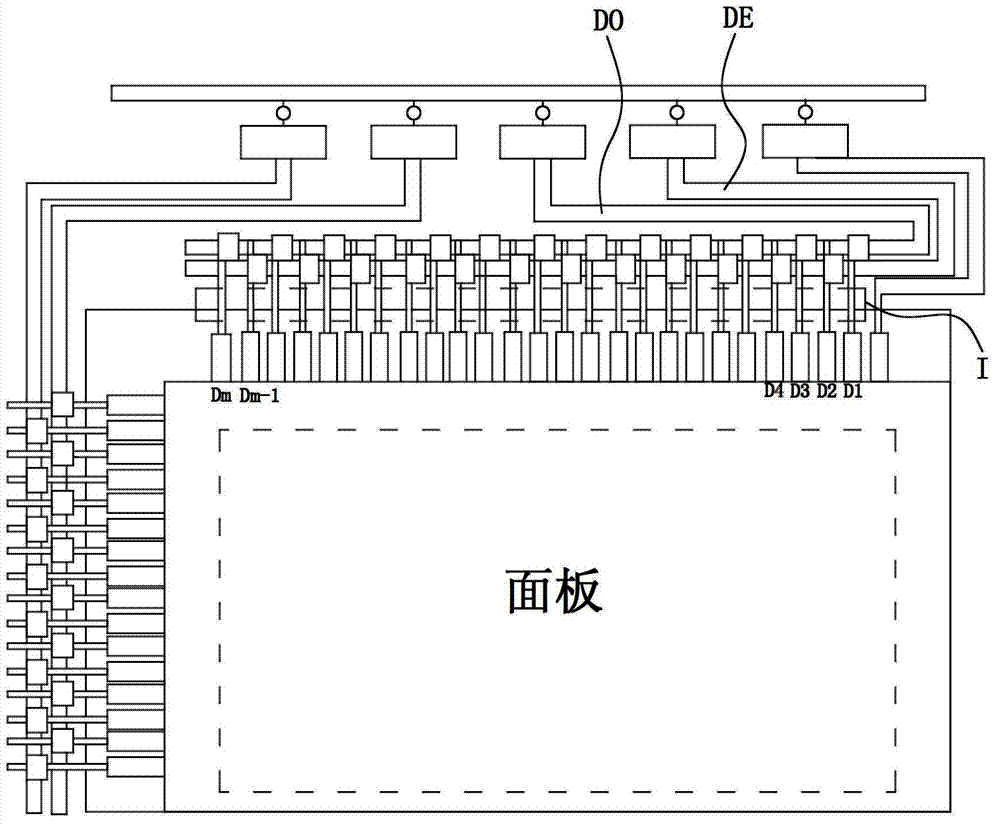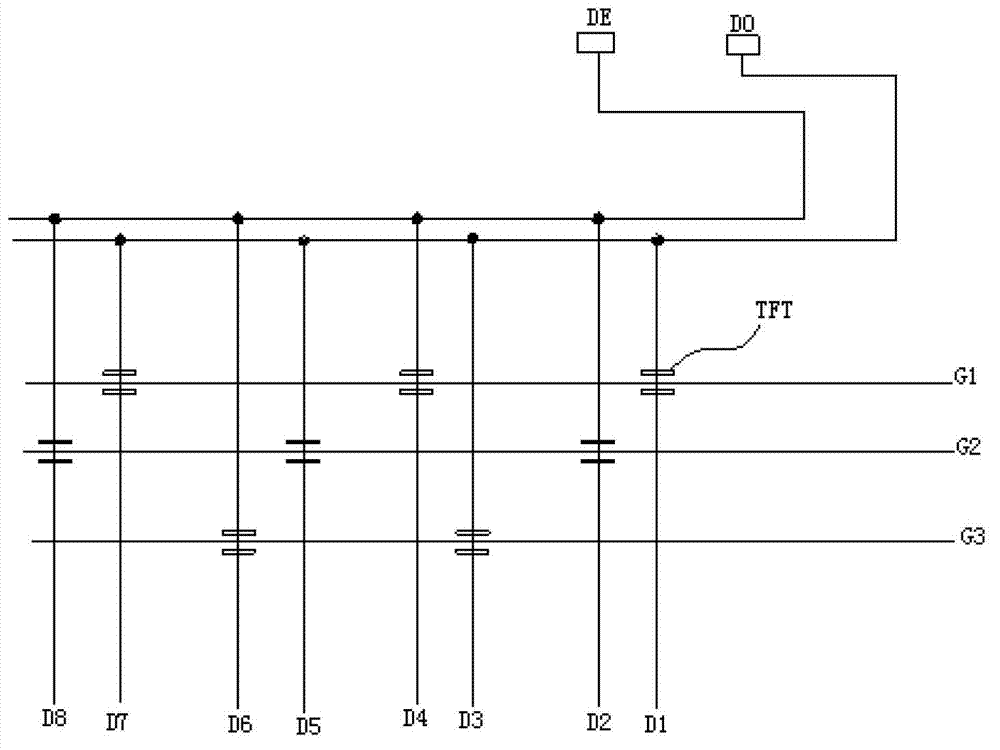DDS (data-data short) detection structure and DDS detection method
A technology for detecting structures and on-off switches, applied in nonlinear optics, instruments, optics, etc., can solve problems such as increased analysis time, inability to DDS classification, and inability to more effectively and timely confirm the cause of defects, so as to improve product yield. Effect
- Summary
- Abstract
- Description
- Claims
- Application Information
AI Technical Summary
Problems solved by technology
Method used
Image
Examples
Embodiment 2
[0034] like figure 2 As shown, this embodiment is an extension of Embodiment 1. In this embodiment, the on-off switch is a thin film field effect transistor (TFT) switch TFT, and the detection structure further includes controlling the thin film field effect transistor. The control line that switches the TFT on and off.
[0035] In this embodiment, the control lines and the gate lines on the display panel are fabricated in the same layer.
[0036] The detection structure is provided with at least N control lines, where N is greater than or equal to 3 and less than or equal to the total number of data lines; the thin-film field effect transistor switching TFTs on each of the N data lines arranged in sequence are controlled by different control lines respectively.
[0037] like figure 2 As shown, there are three control lines in this embodiment, which are a first control line G1 , a second control line G2 and a third control line G3 respectively. Depend on figure 2 It can...
Embodiment 3
[0039] like image 3 As shown, this embodiment records a method for DDS detection using the DDS detection structure described in Embodiment 1 or Embodiment 2, including the following steps:
[0040] S1: Input a high potential to one of the odd-numbered voltage input terminal and the even-numbered voltage input terminal, and input a low potential to the other; turn off all on-off switches, so that the circuit in the display panel is disconnected from the data line of the peripheral circuit; if there is a signal If the output from the main circuit line with low potential input means that the peripheral circuit is abnormal, the data line is short-circuited, and the detection is over; if there is no signal output from the main circuit line with low potential input, it means that there is no problem with the peripheral circuit, and go to step S2;
[0041]S2: Input a high potential to one of the odd-numbered voltage input terminal and the even-numbered voltage input terminal, and in...
Embodiment 4
[0044] The present embodiment is an example extended on the basis of the third embodiment, specifically when the DDS detection structure recorded in the second embodiment is used for DDS detection:
[0045] First, a high potential is input to the odd-numbered voltage input terminal of the odd-numbered main circuit line DO, and a low potential is input to the odd-numbered voltage input terminal of the even-numbered main circuit line DE, and at this time, the first control line G1, the second control line G2 and the third control line G3 all input low voltage, that is, the TFT switches on all data lines are turned off at this time. If there is a signal output from the even-numbered bus line DE, it means that there is SD metal in the peripheral circuit (the metal of the data line). material) remains, causing two adjacent data lines to conduct, resulting in a short circuit. If no signal is output from the even-numbered total circuit line DE, it means that there is no problem with t...
PUM
 Login to View More
Login to View More Abstract
Description
Claims
Application Information
 Login to View More
Login to View More - R&D
- Intellectual Property
- Life Sciences
- Materials
- Tech Scout
- Unparalleled Data Quality
- Higher Quality Content
- 60% Fewer Hallucinations
Browse by: Latest US Patents, China's latest patents, Technical Efficacy Thesaurus, Application Domain, Technology Topic, Popular Technical Reports.
© 2025 PatSnap. All rights reserved.Legal|Privacy policy|Modern Slavery Act Transparency Statement|Sitemap|About US| Contact US: help@patsnap.com



